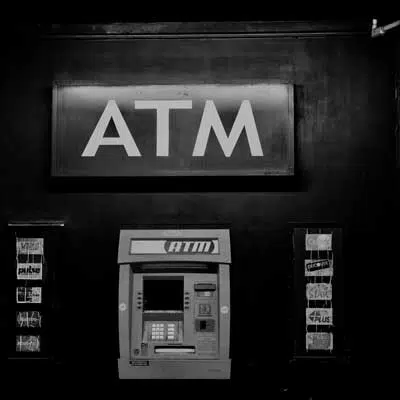The ATM made its U.S. debut 50 years ago, and a half-century later the future of cash and cash-dependent industries like ATMs is the subject of intense debate in industry forums and at city halls and state capitols.
Chemical Bank, now part of JPMorgan Chase & Co., installed the first U.S. ATM at a branch in Rockville Center, a Long Island suburb of New York City, on Sept. 2, 1969, the National ATM Council trade group noted over the weekend. Chemical’s ATM followed by two years the world’s first ATM deployment by Barclays Bank in London.
ATMs rapidly spread after that first Chemical deployment. As of 2016, the U.S. had approximately 470,000 ATMs, of which 59% were operated by independent, non-bank deployers, according to a 2018 University of North Florida study cited by the Jacksonville, Fla.-based NAC. ATM independent sales organizations rapidly gained share in stores and other non-bank locations after 1996, when surcharging was first permitted.

While no one today believes ATMs are going away, their future no longer resembles the clear path that opened in 1969. Virtually every bank and all but the smallest credit unions now have their own ATMs, and non-bank ATMs can be found in every high-traffic retail location. And the continued increase in credit and debit card payments along with new mobile-payment services has cut into the use of cash.
Deployers are adapting, in part by adding new technology such as mobile apps that enable a consumer to arrange a transaction before arriving at the ATM, and enabling the machines to accept contactless payment cards in order to speed transactions. Banks, meanwhile, in efforts to expand their physical presence without opening costly branches, are teaming up with non-bank deployers such as Cardtronics plc to put their brands on ATMs they don’t own.
“The ATM business is continuing to evolve, with an emphasis on making our terminals integrate well with mobile-phone apps and ‘touch-and-go’ credit/debit cards, as these new forms of payment technologies continue to grow,” Patrick Conner, NAC vice chairperson and chief executive of Westlake Village, Calif.-based ATMPartMart.com, said in a NAC press release. “To think of how far the technology has already come is mind boggling, and we are seeing another major leap forward in the form of software-based enhancements to the ATM that are now becoming possible.”
Meanwhile, payment executives continue to debate the future role of cash as stores that accept only cards or mobile payments attract attention far out of proportion to their tiny share of retail locations. A number of jurisdictions, including Philadelphia and New Jersey, have banned cashless stores on grounds they exclude people who don’t have or want to use card-based or mobile payments.
It’s difficult to ascertain whether cash needs legal protection given that most consumers still make some use of it. “The bottom line is we’re in a transition period of some sort,” Bruce Wayne Renard, the NAC’s executive director, said at last week’s Mobile Payments Conference in Chicago. “Cash in both the U.S. and worldwide is so embedded in the collective consciousness that it’s not going away anytime soon.”
Renard was a member of a panel dubbed “The Cashless Society: Are We Ready?” Another panelist, Katherine McClure, partner development manager at London-based cross-border payments provider PPRO Financial Ltd., noted by cash payments remain dominant in many countries. “Cash is going to stick around as long as we feel a need for it,” she said.





